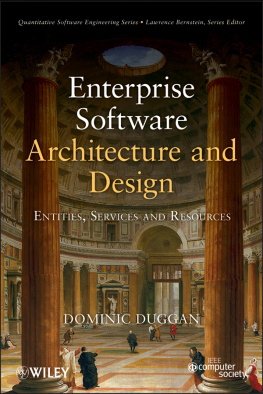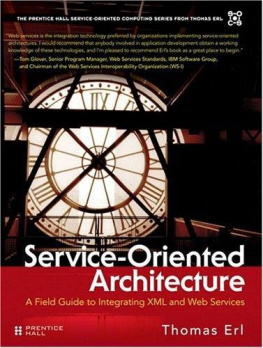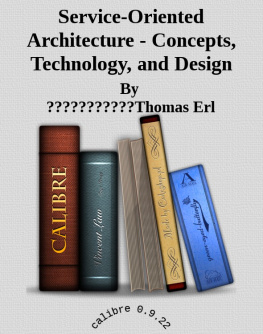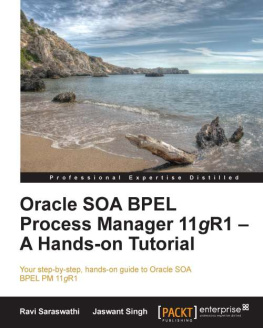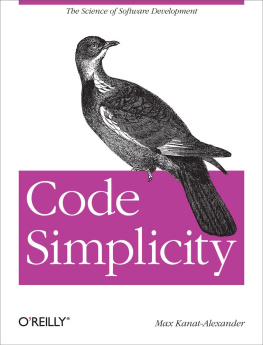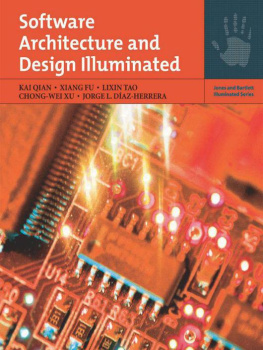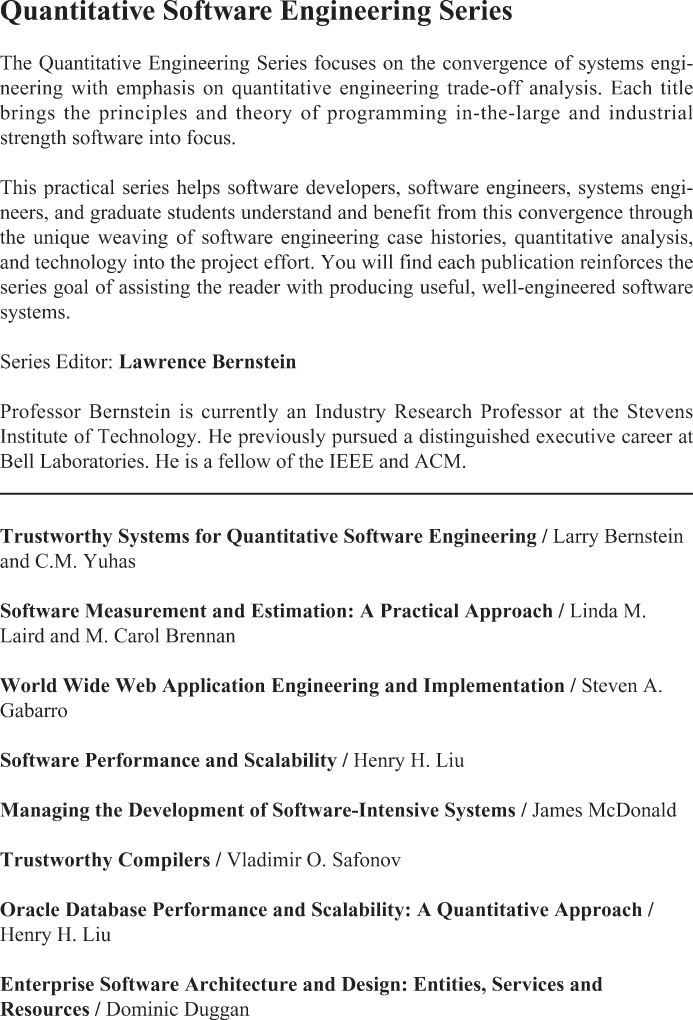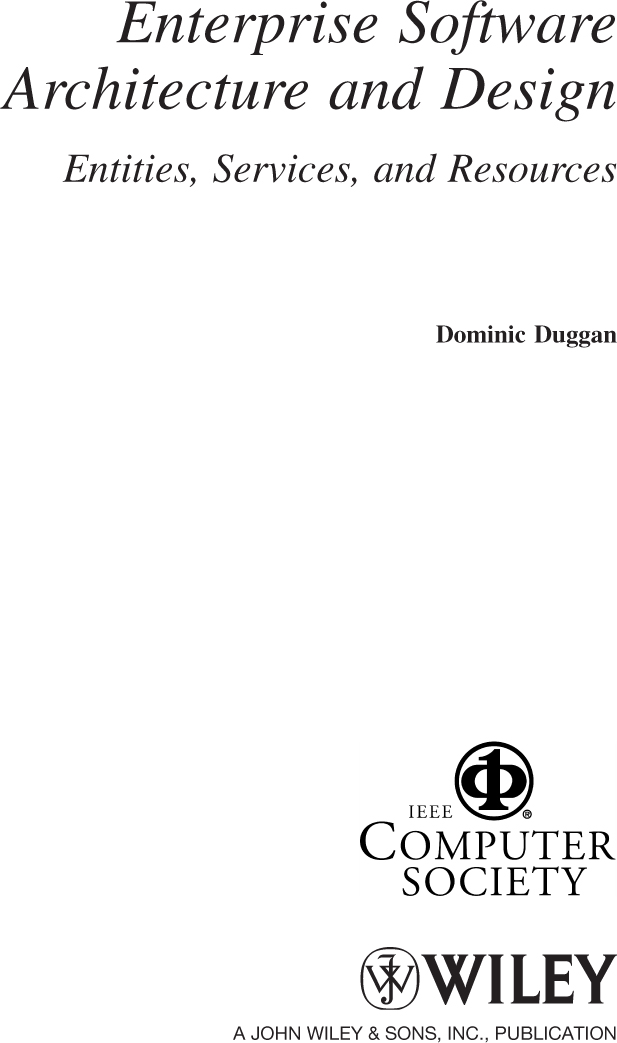Copyright 2010 by John Wiley & Sons, Inc. All rights reserved.
Published by John Wiley & Sons, Inc., Hoboken, New Jersey.
Published simultaneously in Canada.
No part of this publication may be reproduced, stored in a retrieval system, or transmitted in any form or by any means, electronic, mechanical, photocopying, recording, scanning, or otherwise, except as permitted under Section 107 or 108 of the 1976 United States Copyright Act, without either the prior written permission of the Publisher, or authorization through payment of the appropriate per-copy fee to the Copyright Clearance Center, Inc., 222 Rosewood Drive, Danvers, MA 01923, (978) 750-8400, fax (978) 750-4744. Requests to the Publisher for permission should be addressed to the Permissions Department, John Wiley & Sons, Inc., 111 River Street, Hoboken, NJ 07030, (201) 748-6011, fax (201) 748-6008, or online at http://www.wiley.com/go/permission.
Limit of Liability/Disclaimer of Warranty: While the publisher and author have used their best efforts in preparing this book, they make no representations or warranties with respect to the accuracy or completeness of the contents of this book and specifically disclaim any implied warranties of merchantability or fitness for a particular purpose. No warranty may be created or extended by sales representatives or written sales materials. The advice and strategies contained herein may not be suitable for your situation. You should consult with a professional where appropriate. Neither the publisher nor author shall be liable for any loss of profit or any other commercial damages, including but not limited to special, incidental, consequential, or other damages.
For general information on our other products and services or for technical support, please contact our Customer Care Department within the United States at (800) 762-2974, outside the United States at (317) 572-3993 or fax (317) 572-4002.
Wiley also publishes its books in a variety of electronic formats. Some content that appears in print may not be available in electronic formats. For more information about Wiley products, visit our web site at www.wiley.com.
Library of Congress Cataloging-in-Publication Data:
Duggan, Dominic.
Enterprises software architecture and design: entities, services, and resources applications / Dominic Duggan.
p. cm.Quantitative software engineering series; 10)
ISBN 978-0-470-56545-2 (hardback)
1. Enterprise Software Architecture and Design (Computer science) I. Title.
TK5105.5828.D84 2012
004.6'54dc23
2011031403
To My Father
Acknowledgements
Thanks to Larry Bernstein for suggesting this book, and for his friendship.
Thanks to my students for their enthusiasm.
Thanks to my family for their support and encouragement.
D. D.
Chapter 1
Introduction
Communications protocol development has tended to follow two paths. One path has emphasized integration with the current language model. The other path has emphasized solving the problems inherent in distributed computing. Both are necessary, and successful advances in distributed computing synthesize elements from both camps.
Waldo et al. [1]
This book is about programming-in-the-large , a term coined by DeRemer and Kron [2] to distinguish the assembly of large applications from components, from the task of implementing those components themselves. Many of the principles of programming-in-the-large were earlier elucidated by Parnas in two articles [[3, 4]]. It is striking how many of the key ideas of programming-in-the-large that remain relevant today were in Parnas' seminal work.
In the 1980s, with the rise of local area networks (LANs) and object-oriented programming, distributed software buses appeared as solutions to the growing complexity of networked heterogeneous software systems. The synthesis of these trends saw the emergence of the Common Object Request Broker Architecture (CORBA) in the late 1980s. Long before then, industries such as banking and air travel had developed on-line networked transactional systems that are still in heavy use today. CORBA, as originally envisaged, was to be the glue for allowing those legacy systems to be incorporated into modern applications. The use of systems such as CORBA, and particularly of transaction processing monitors, as the backbone for enterprise middlewares has, indeed, been a success story in enterprise software environments. Unfortunately, and perhaps predictably, the challenge of heterogeneity remained, as a heterogeneous collection of software buses emerged for application deployment.
In the 1990s, a true sea change happened with the advent of the World Wide Web. Besides making the uniform resource locator (URL) a part of the daily culture, the spectacular success of the Web has required enterprises to consider how their business model can adapt to this newly popular communication medium. The first Netscape browser included support for the hypertext transfer protocol (HTTP) for the Web, but also supported the safe execution of dynamically downloaded Java applets in the Web browser. It also had support for the CORBA communication protocol to enable those applets to connect back to the server through sophisticated inter-object request broker protocols. Clearly, the thinking here was that a simple protocol, such as the Web protocol, should just be an entry point into the more sophisticated realm of distributed enterprise applications built on modern middleware.
The vision of ubiquitous distributed object systems connecting the world together did not materialize. It became impossible to ignore the significance of location that distributed object systems were supposed to mask. No amount of middleware layering can hide the fact that there is a network connecting the points together, and that network has effects such as latency and failures that cannot be masked from applications. At the same time, the Web protocols that were supposed to be just an entry point into more sophisticated protocols showed amazing staying power, while frustration grew with the complexity of the more sophisticated approaches. Most importantly, connecting applications across enterprise boundaries remains a difficult problem, perhaps inevitably so because market forces push against a standardized solution to the problem.
The first decade of the 21st century saw the rise of Web services, an alternative approach to distributed object systems for providing and consuming software services outside the enterprise. Rather than run over proprietary protocol stacks, Web services were proposed to operate over the same Web protocol that had been such a spectacular success for business-to-consumer e-commerce. Although business-to-business e-commerce over reliable messaging systems has been in use for many years, the clear trend has been to vastly increase the scale of this inter-operation by making use of the Web protocol stack. Enterprises must learn to leverage the Internet for rapid and agile application development by continually striving for the optimum mix of in-house expertise and outsourced software services. Thus, service-oriented architecture (SOA) emerged: partly driven by the enabling technology of Web services, partly building on work in component-based development for programming-in-the-large, and partly seeking to align the information technology (IT) architecture with the business goals of the enterprise.

